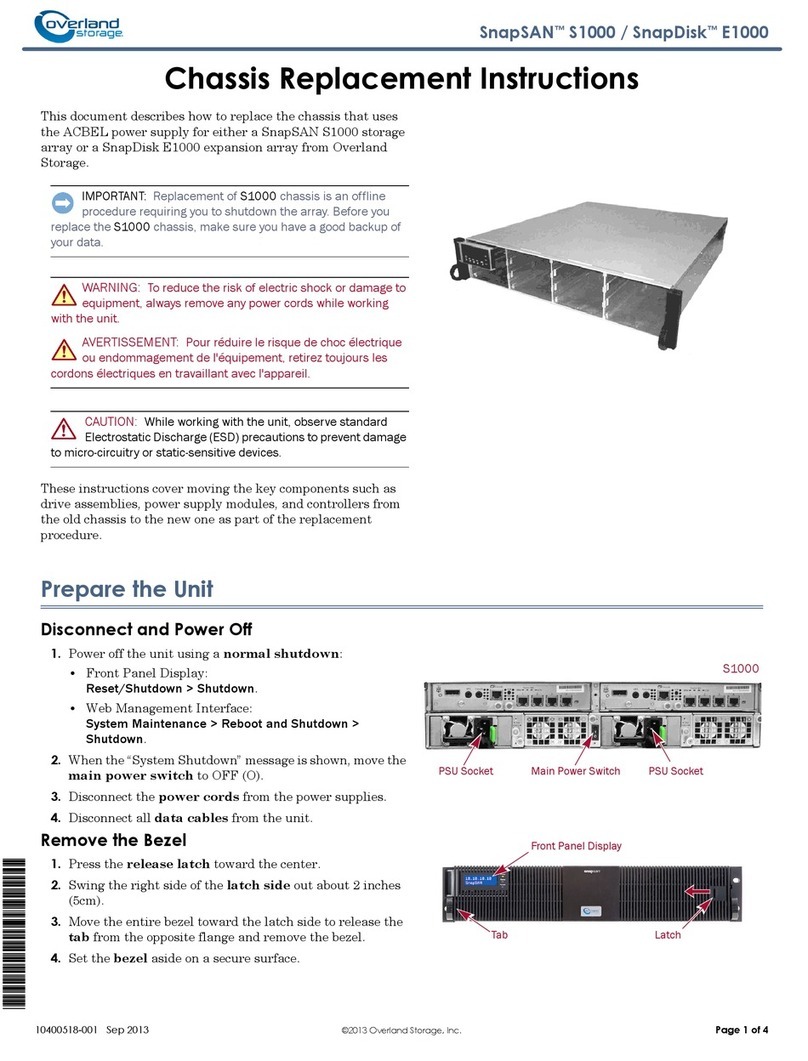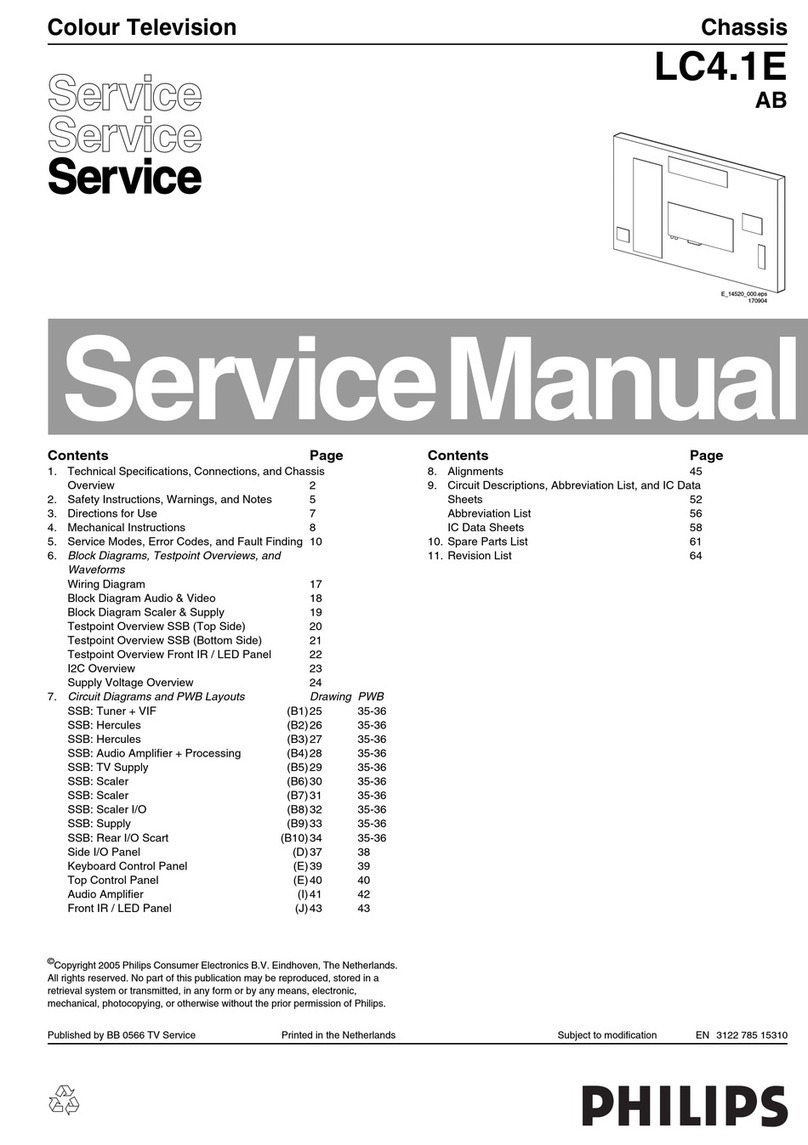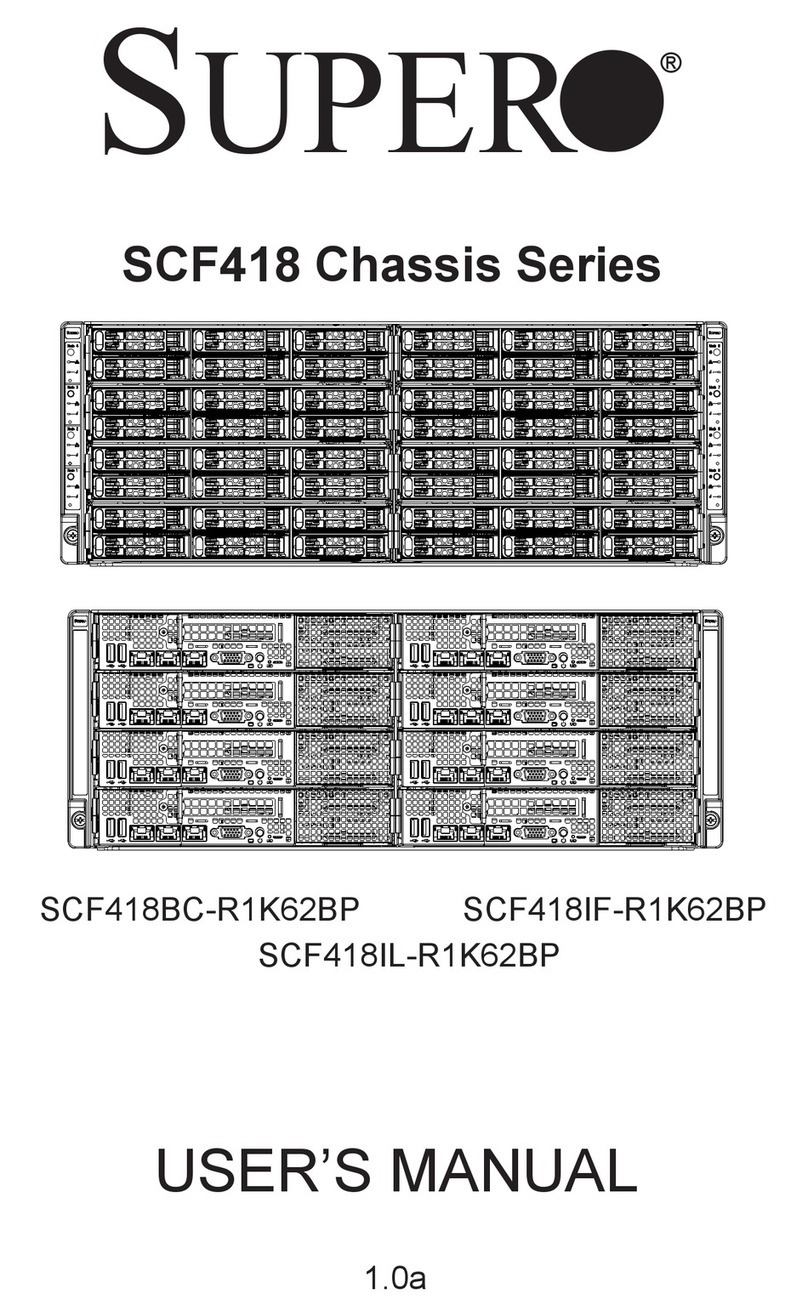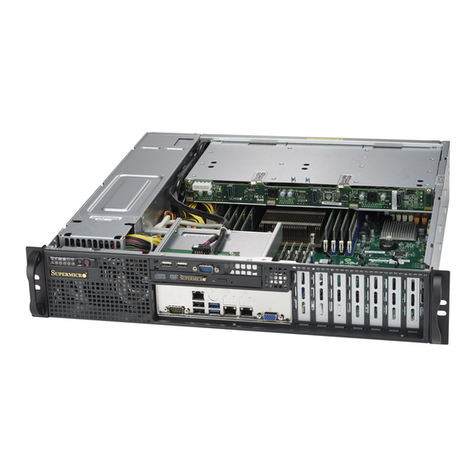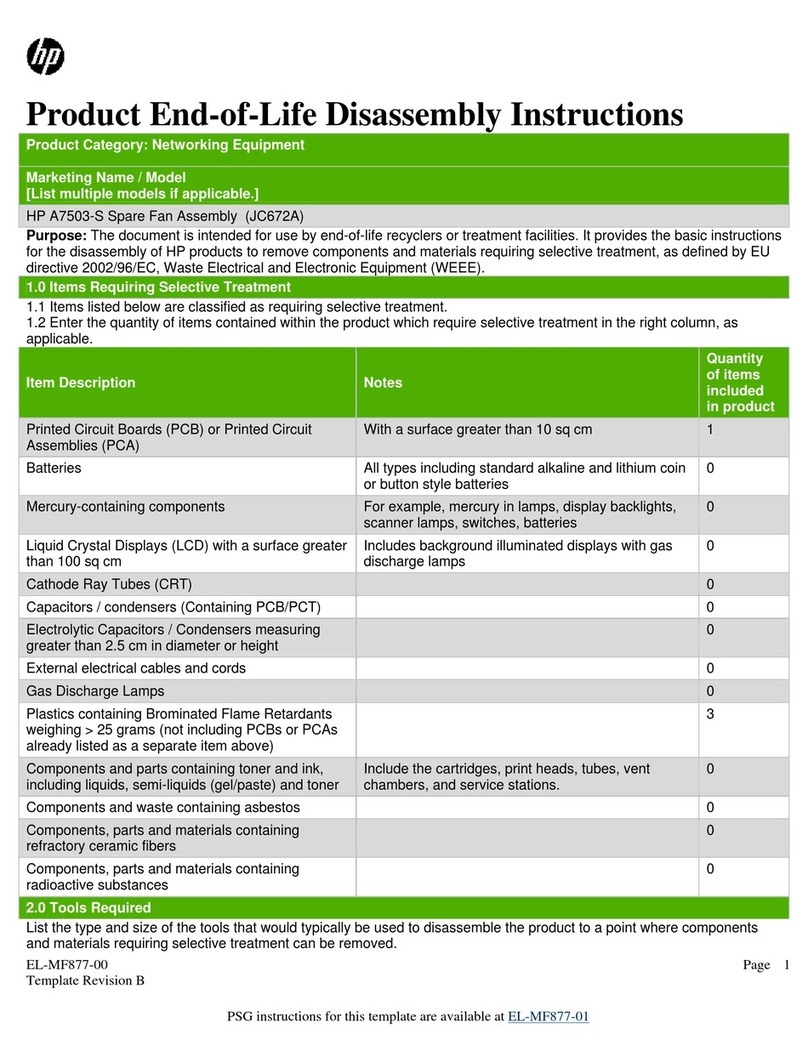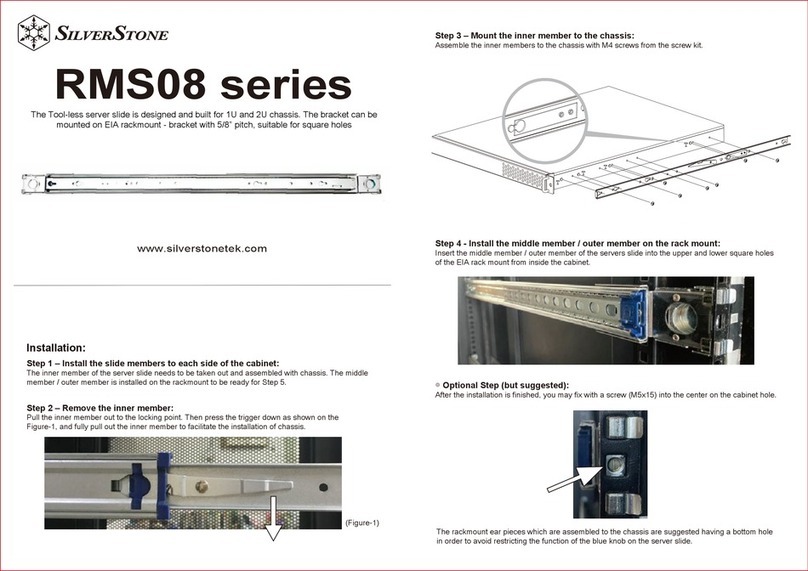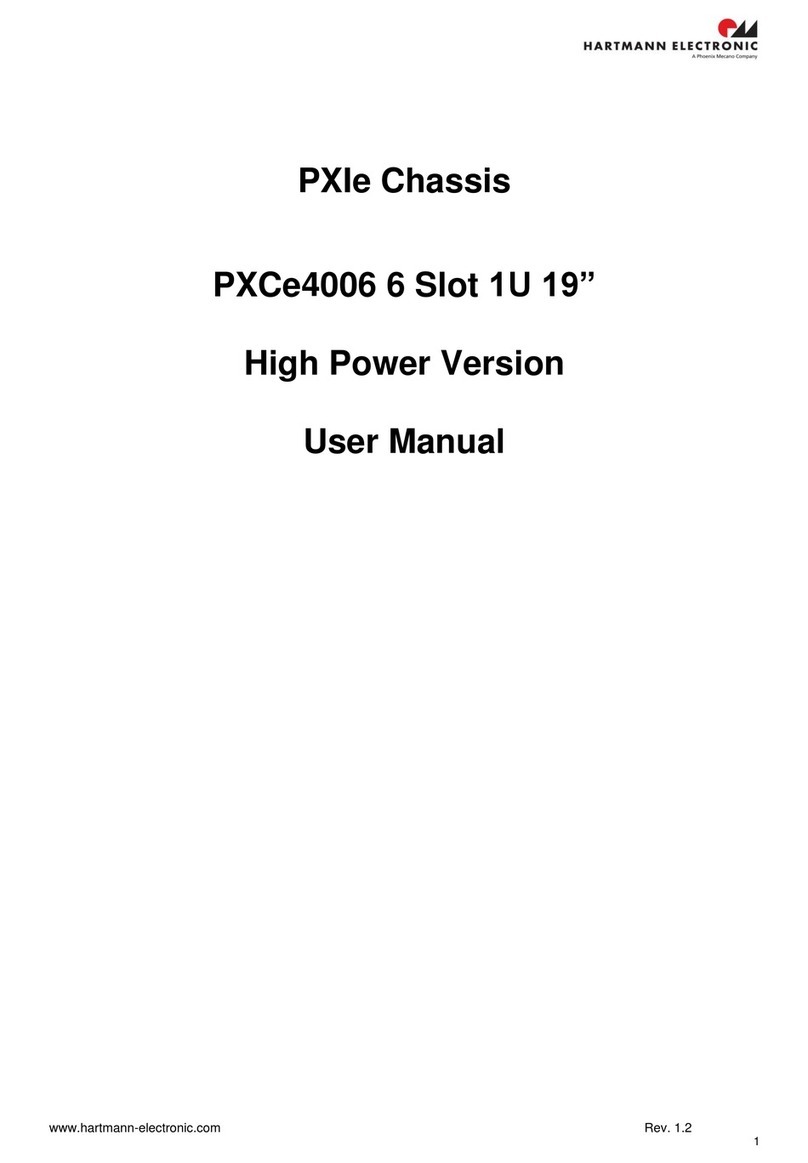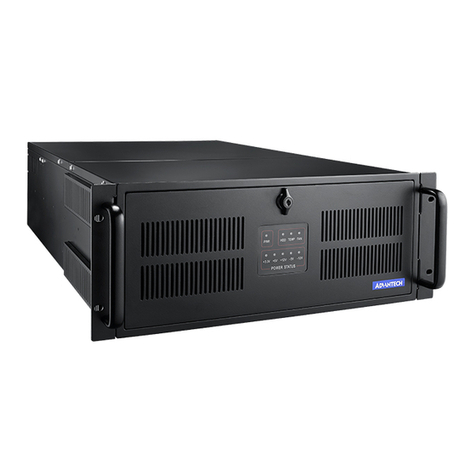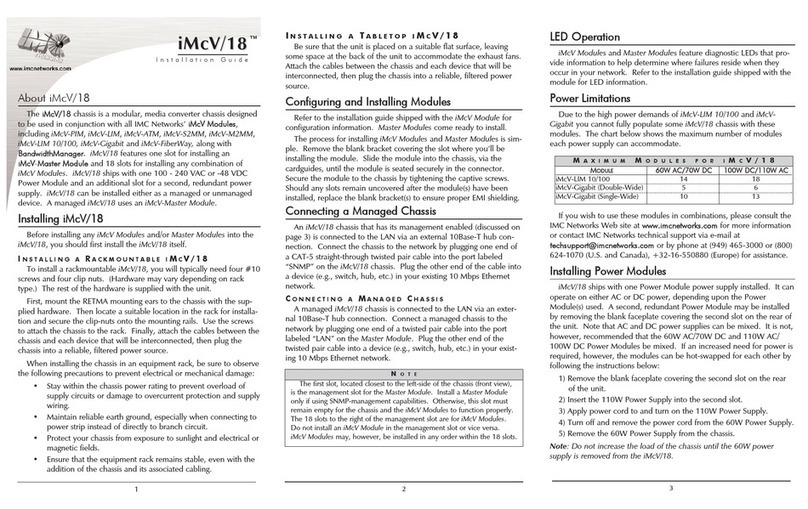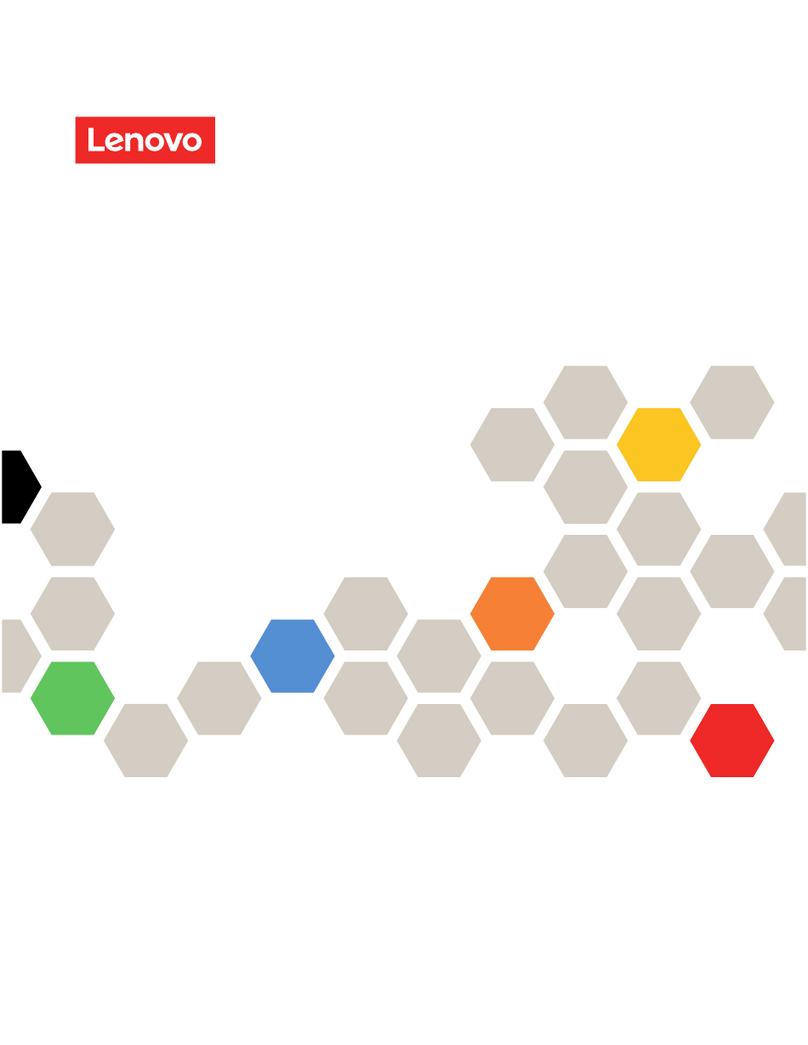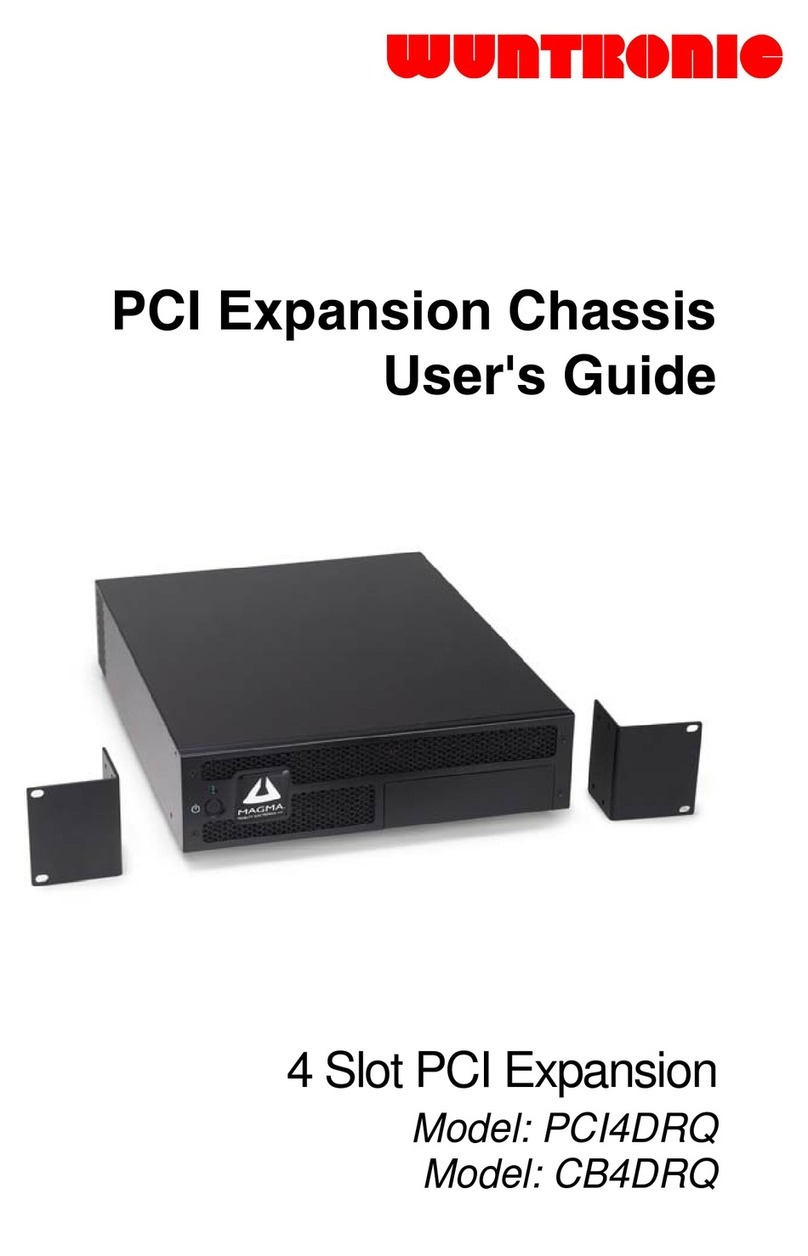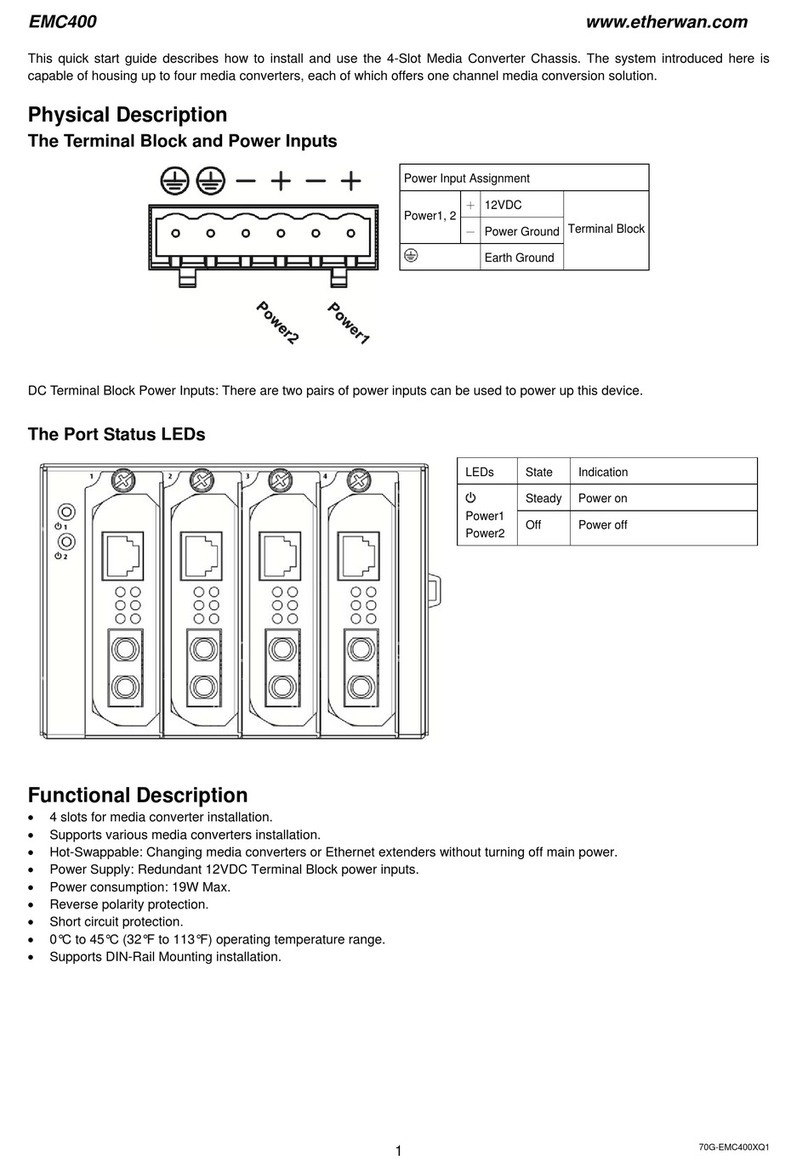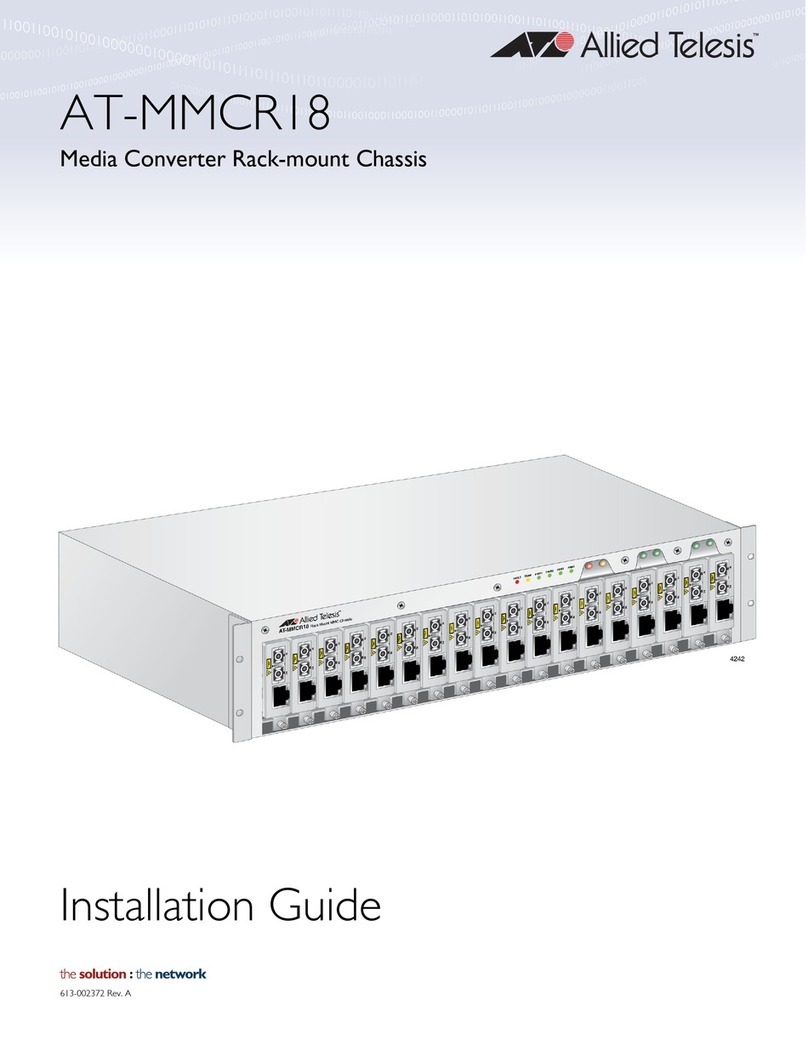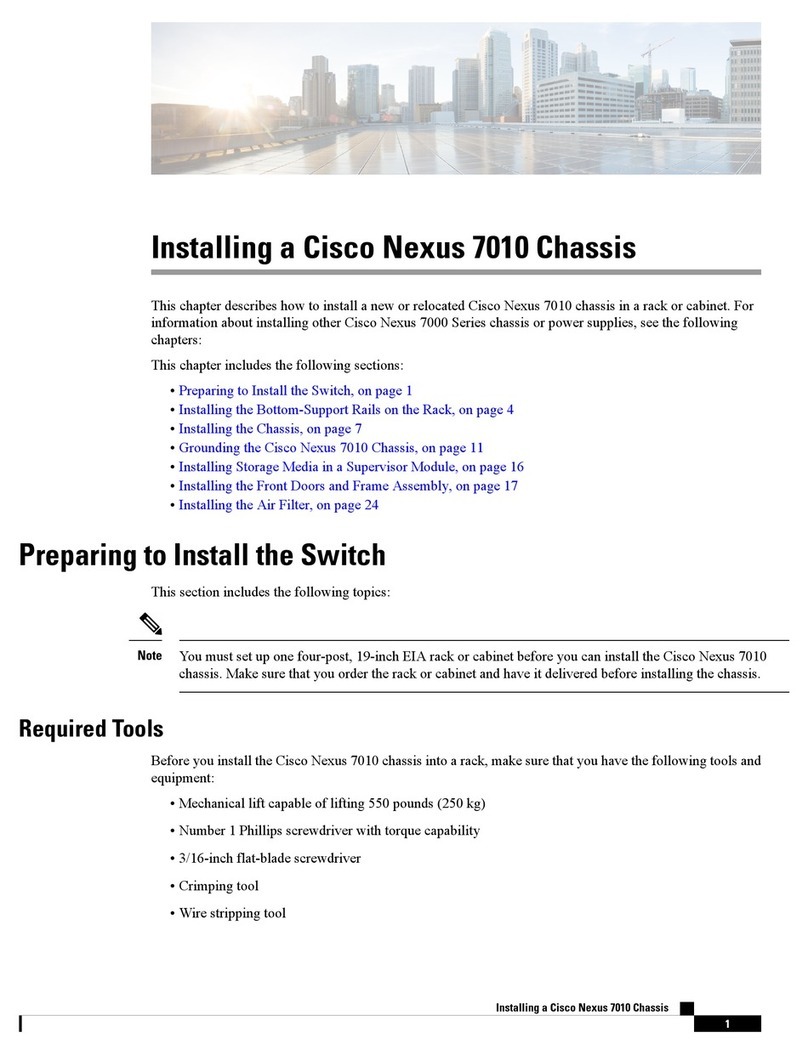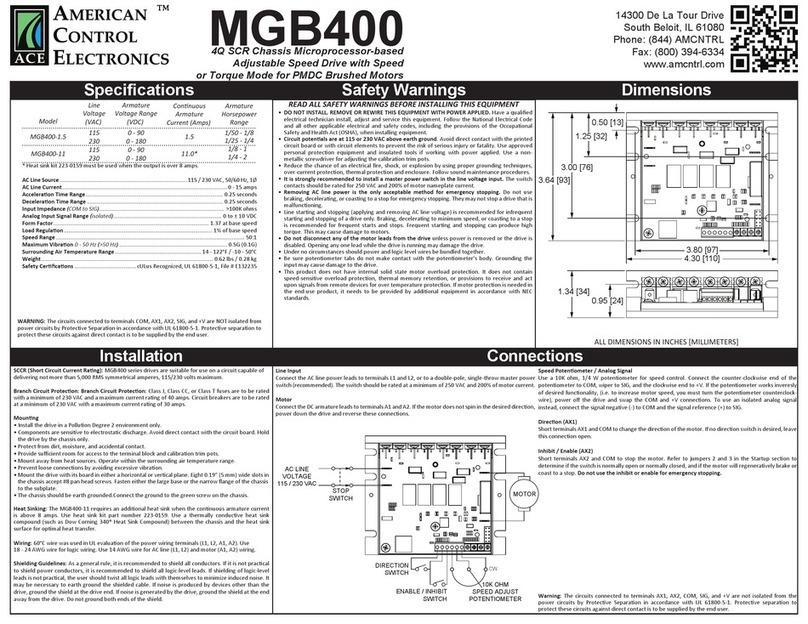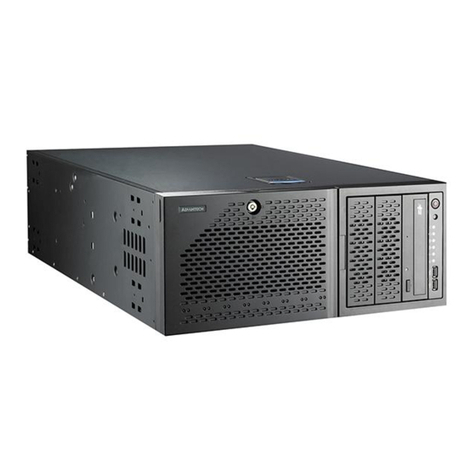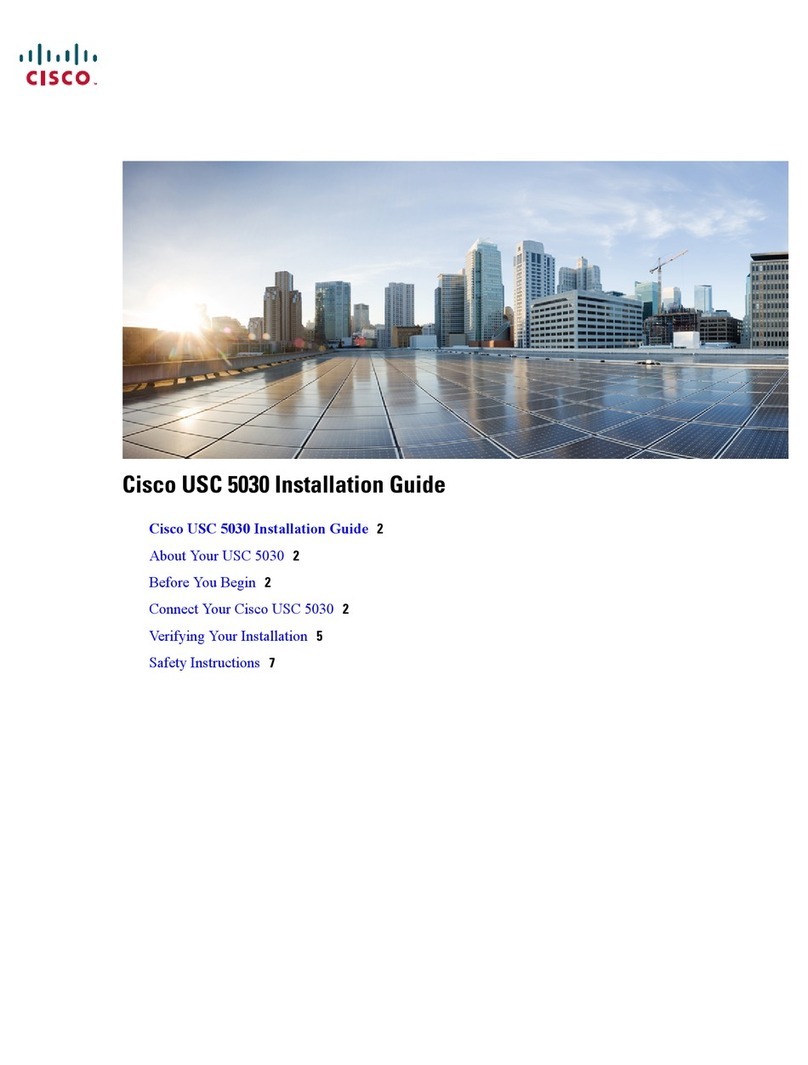
RFL Auxiliary Hybrid Chassis RFL Electronics Inc.
March 29, 2005 10 (973) 334-3100
Table 3. Controls and indicators, Skewed Hybrid Module
Component
Designator
Name/Description Function
J1 Jumper Should always be in the A position
J2 Jumper Enables the protection circuit with current limiting. The “IN” position enables
current limiting. The “OUT” position disables current limiting.
J3 Jumper Enables 50 Ohm termination. The “IN” position enables the termination. The
“OUT” position disables the termination.
SW1 Switch Coarse adjustment for balancing network
R4 Potentiometer Fine adjustment for balancing network
TP3 Test point Line High (orange)
TP4 Test point Line Low (orange)
TP5 Test point Receive High (green)
TP6 Test point Receive low (yellow)
TP7 Test point Send High (red)
TP8 Test point Send Low (white)
SELECTING RECEIVE PORT PROTECTION AND TERMINATION
The receive port of the hybrid contains protection circuitry for the receiver’s front-end, and line
termination resistance. These features are similar to those used in the RF Line I/O, and may be
individually selected by using jumpers J2 and J3 as described in Table 3. Transient suppressor CR1
limits the voltage to the receiver and resistor R1 limits the current. Jumper J2 is used to bypass R1
when current limiting is not desired. J3 is used to enable the 50 Ohm termination resistance. The power
dissipated by the termination should be limited to 1W.
The protection circuit should be placed as close as possible to the receiver and the termination should
be placed at the end of the signal path. In a chassis with a single rear UHF connector, the termination
and protection should be enabled (“IN”) on the hybrid. The received signal is then wired directly to the
receiver circuits.
If the received signal is sent to a UHF connector on the line I/O (e.g. to go to another receiver), both
the termination and protection should be omitted from the hybrid (“OUT”). The received signal out of
the hybrid is sent to the line I/O’s UHF connector. Following the connector is the termination resistor.
If this is the last, or only receiver using this signal, the termination on the I/O should be enabled. The
protection circuit is always enabled on the I/O when connected to the local receiver, to protect the
local receiver. This configuration protects the receiver from line disturbances passed through the
hybrid and also protects against any transients applied to the UHF connector.
The termination must never follow any current limit resistance. The signal should be wired directly
from the protection circuit to the receiver, and each receiver should have protection.
